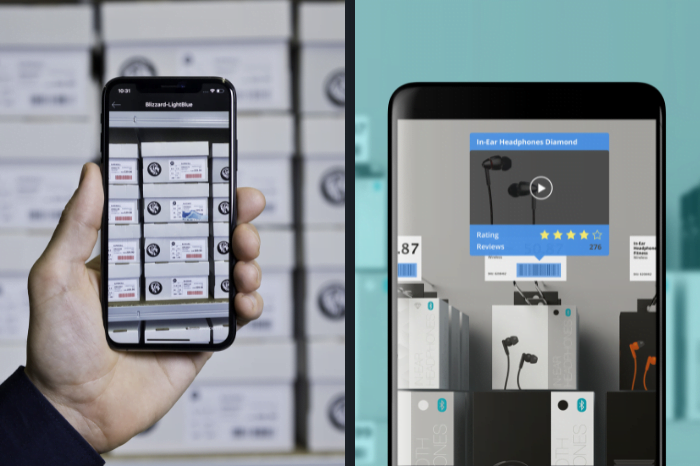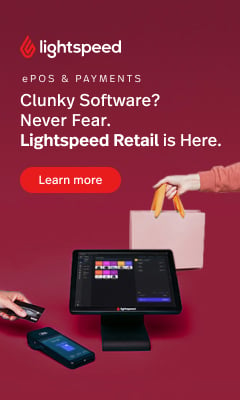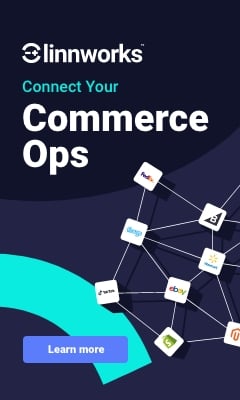Q&A: Domenico Antonucci, Scandit
Scan and go is not new but what about scan and save? We talk to Retail expert Domenico Antonucci about how barcode scanning and AR are helping retailers to blend online and instore experiences while increasing footfall and shopper loyalty.
Can you tell us a bit about your background?
I’ve been in the retail industry for 25 years and in that time, I’ve worked across the whole supply chain; from planning, to sourcing, to distribution, to point of sale and the end consumer. This tenure has given me a terrific grasp of what’s important to retailers and a deep understanding of the challenging and complex industry. I’ve been fortunate to work for leading technology businesses including Prologic, Micros, K3 and Infor and I’ve just passed the 3-year mark at Scandit where I’m responsible for the retail market across the UK & Ireland.
What does Scandit do?
In a nutshell, we turn the camera on any device into an industry grade barcode scanner and then some! This allows both retailers and consumers to interact with everyday objects by blending the physical and digital worlds using computer vision. Our technology combines machine learning to barcode scanning and augmented reality (AR) to use on any camera-equipped smart device.
Barcode scanning isn’t new though – why is this interesting?
The real magic that we can bring to it is speed, accuracy and innovation to any smart device with a camera. Sure, there are lots of scanning applications out their but when it really comes down to it, none can offer the same level of performance and accuracy to so many different devices. To date, we’ve tested our scan engine on over 20,000 device/OS combinations. For scan and go to be successful, you really need superior accuracy that works on every consumer device – not “most of them”. We’re also able to scan damaged or poor-quality barcodes, through plastic, at awkward angles and in poor lighting. Failed scanning leads to frustrated customers which of course means reduced sales and even shrinkage.
This is all important stuff, but we also do some clever things too which you could never do with an ordinary scanner. An example of this is matrix scanning – scanning multiple barcodes at once. We call this MatrixScan and it’s able to locate, track and decode multiple barcodes at the same time and fast. It makes light work of tasks like stock count, shipping and receiving. In fact, it can speed up inventory management by up to 40%.
Next, we can load a visual layer to this with AR which is when the tool really comes to life. MatrixScan AR superimposes information on top of the scanned product. You can show staff (or consumers) just about any detail you want to at this point for example, if you scan over a shelf edge label, you can very quickly see information about what stock you have available. You can then have conditional formatting included too so if you have low stock of an item, it can hover in red, making it really fast and easy to identify etc.
Isn’t this what Scandit and JISP have just launched with Nisa?
Yes, exactly this. Coupons and rewards are a great example of where and how to ‘hang’ coupon information on top of a barcode. Together with JISP, Nisa have just launched a ‘scan and save’ consumer app to present exclusive promotions to signed up customers. This is an example of how to use AR in a really valuable way which means that customers will keep using it! And it’s remarkably simple to use – you scan the label, and you see your offer. Traditional vouchers (paper types) typically see a redemption rate of between 5 and 10%, with the JISP tool, Nisa are seeing 91% of scanned promotions are being redeemed at the till and 87% of those customers are repeat scanners week in and week out.
This is a really clever use of connected technology which is not only driving transactions in store but also, it’s engaging for the consumer. The technology is enabling consumers to ‘lean in’ which is a phenomenal shift, a retailer’s dream. Through the membership programme, the retailer will be able to learn all about their customer, who they are, what store they are in, what offers they are interested in etc. This information can be used to create unique offers, it’s fantastic, it’s golden. And brands love it too because it helps them to better understand and position their promotions which are going out directly to the consumer.
How else could retailers use scanning?
You can use it for all kinds of things, improving the experience for both consumers and retail collegues. Clientelling is a great example. Imagine you are in shoe retailer and looking for a size nine pair of trainers. With Scandit’ s barcode scanning technology, the store associate can help you with stock availability and product information without having to go into the back room to find items.

Another example is in an electronics store. Customers can scan the barcode to find out more information like customer ratings. In a homeware or department store, you might want to arrange large item to be delivered. It’s a great offering because you’re giving your customers a choice and making it easy.
The barcode tool is ideal for click and collect. With a ‘search and find’ tool you simply hover the device over many packages, and it will highlight the correct one, it’s fast and it provides a good omnichannel experience to the consumer.
What about scanning devices?
The hardware landscape is changing and it’s an exciting time. We recently worked with a high street fashion brand on a device replacement project. They switched over to an android device which had a higher spec than an HTT scanning device, but at a lower cost. They changed out 2,000 devices and put in 3,500 new devices at the same cost. Android hardware really opens the market, not just on price, but options too. Instead of just a few options, you now have hundreds, and it puts the retailer in control of the OS which is very appealing for retailers.
What challenges are retailers facing in 2022?
Creating connected snappier experiences is going to be front of mind for retailers because once again, we are in a period of transition. For example, over the last 18 months, grocery retailers were forced to heavily invest in home delivery solutions. As we come out of lockdown, consumers are not having as many deliveries as before – we’re all wanting to get out and about.
In the news last week, Aldi announced they were ditching Deliveroo as demand for home deliveries has waned – it’s a transition period.
Customers are back in store, and they want, and expect more information. The challenge for retailers now is how do you blend that online and instore experience. When you have the customer in front of you – and you have them for less time than ever before – you need to give them a snappier, frictionless experience. Consumers are savvy, they know how to self-serve and find out information for themselves, you can’t afford to leave them on the store floor when they ask questions, they will leave, they will be frustrated.
What’s on the horizon.
There is so much that can still happen in this space. JISP is a great example of tying in and connecting the technology of data capture, AR and customer loyalty and it is just the beginning. Providing customers with unique offers tailored to them is still an area that has incredible growth potential, and this is an area that Scandit will be tapping into even further. We’re just scratching the surface of what could be done here.














